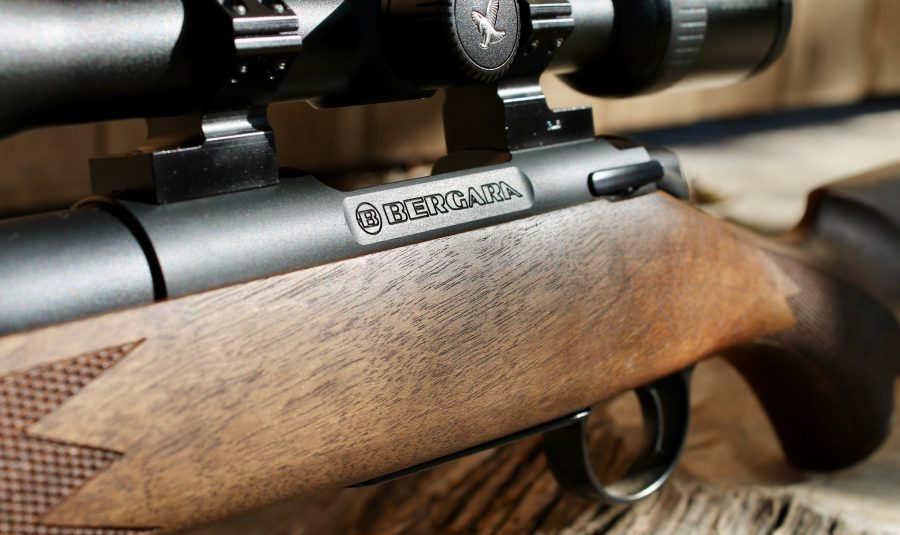
Much ink has been spilled by the modern gun writer about the sanitization and sterilization of today’s modern rifle. Blame the AR-15. Blame the kids. Blame the scapegoat of your choice. But as I sit here rediscovering recently-christened Nobel laureate Bob Dylan, I can’t help but quote the man – “the times they are a changin’.”

Whether we care to admit it or not, today’s masses desire (and buy) plastic stocked, cheaply manufactured space guns. For years, the bolt gun was safe from all of that. But as manufacturing and marketing caught up, someone had the wise idea to put a solid bolt action with a good button rifled barrel in a plastic stock with a good trigger and sell it for something slightly more than a song and a dance.
I assume Savage started the trend, but Ruger and Mossberg have gone hog wild with the concept. Perusing the shelves of my hometown gun shop, the walnut stocked guns are few and far between while the shelves are dominated by these plastic fantastics.
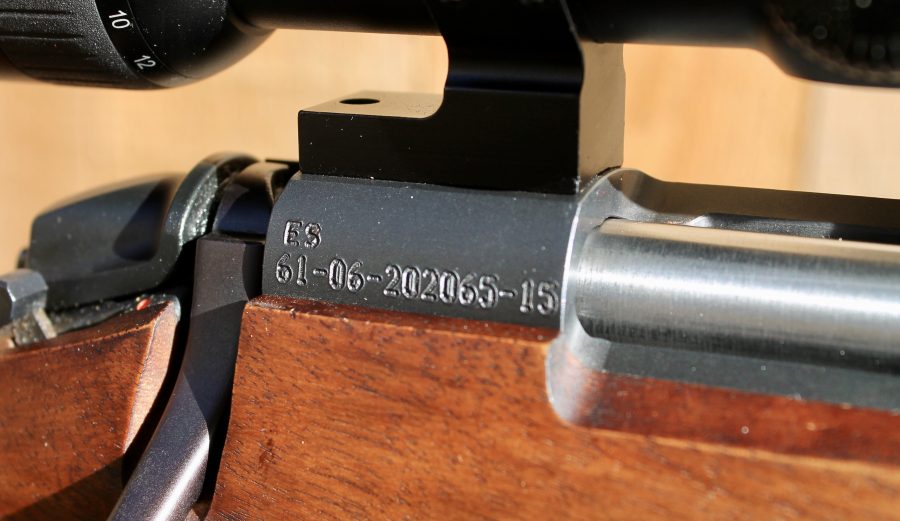
And why wouldn’t you buy one? For less than $400, you can buy a sub MOA rifle in 6.5 Creedmoor from Ruger that will poke holes in things just as easily as the rifle you see here. That rifle, incidentally, is the B-14 Woodsman from Bergara. This is a rifle with real world pricing at just a few Hamiltons over $700…right in the ballpark of major manufacturer’s walnut stocked, blued actioned bolt guns.
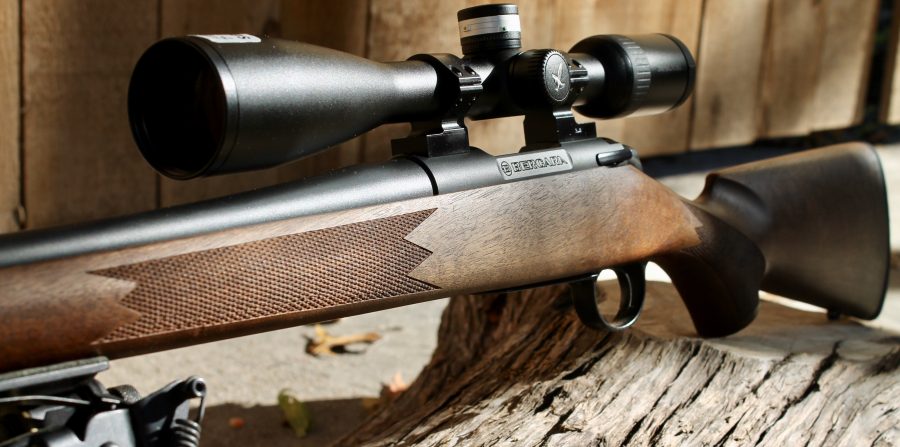
Bergara’s Woodsman is assembled in the same factory as the identically chambered LRP Elite I reviewed earlier this year. That rifle, as you’ll remember, retails for nearly $2700. So what does the Woodsman give you for $300 more than the price of a Ruger American Rifle Predator edition?

First, a very sturdy hard sided case. Now, I fully recognize that a rifle case doesn’t make a damn bit of difference in the field, but this is every bit as nice as some of the Plano hard cases I’ve seen.
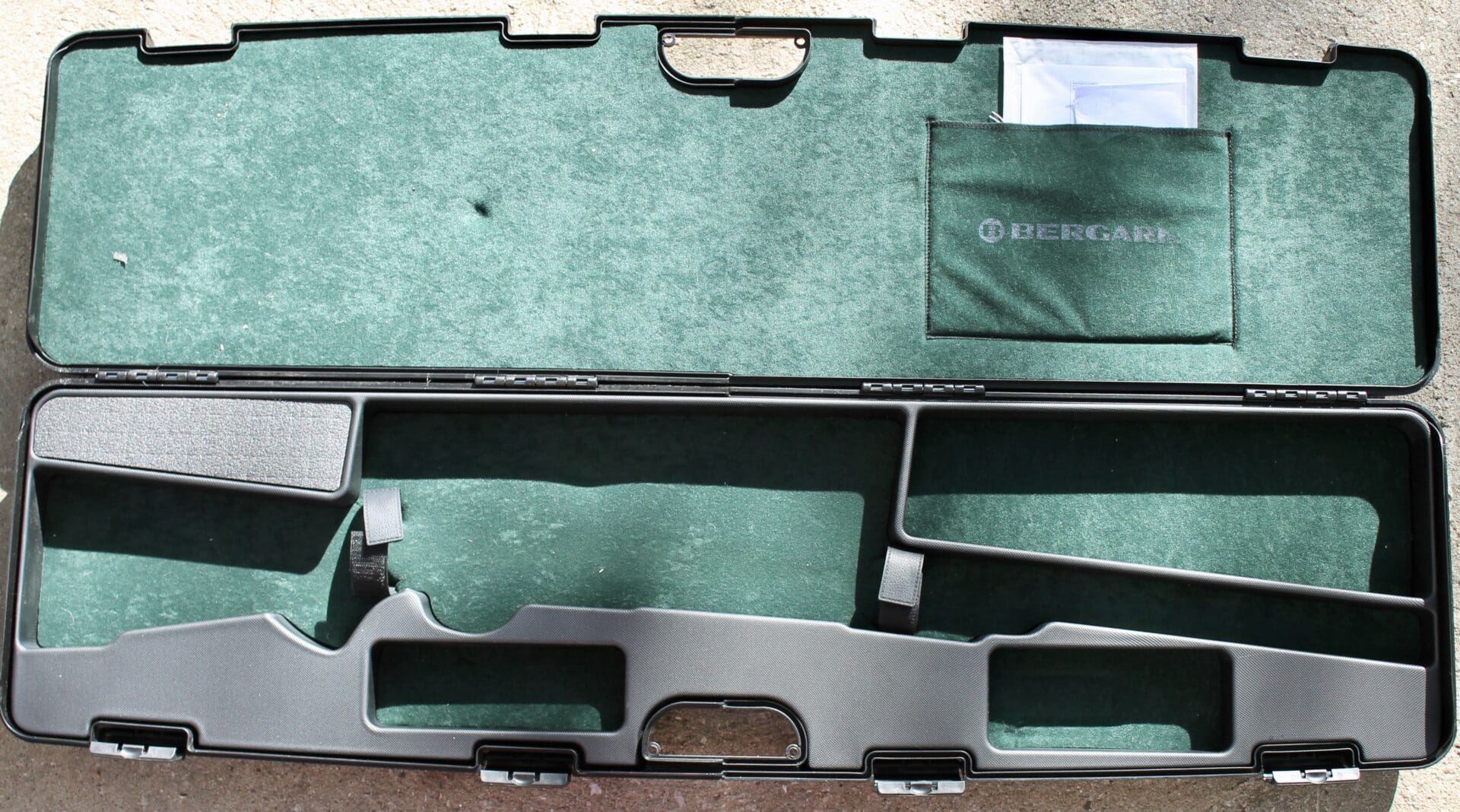 I wouldn’t trust it for TSA approval, but it’s good enough for range duty, and a quick rain shower on the way home proved that it will keep the rifle dry in the bed of a truck.
I wouldn’t trust it for TSA approval, but it’s good enough for range duty, and a quick rain shower on the way home proved that it will keep the rifle dry in the bed of a truck.
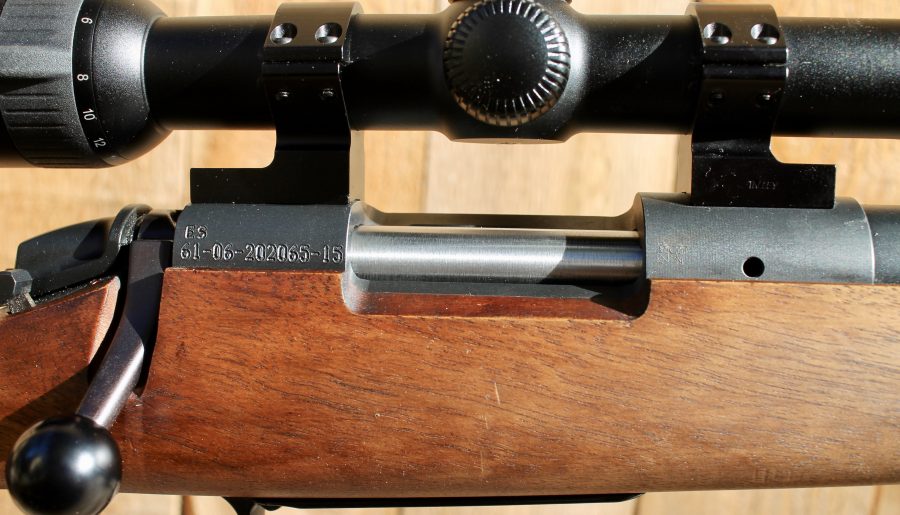
The second thing you get for the extra samolians is a very nice Remington 700 style action. There are some subtle differences between the two, but those familiar with the placement of controls will recognize the B-14 action for what it is; a somewhat updated version of the venerable favorite. Should you ever choose to replace parts like the stock, Bergara tells me that the B-14 should mate up nicely with Remington 700 spec parts. And should you ever need or choose to rebarrel, the work will be very familiar to your gunsmith.
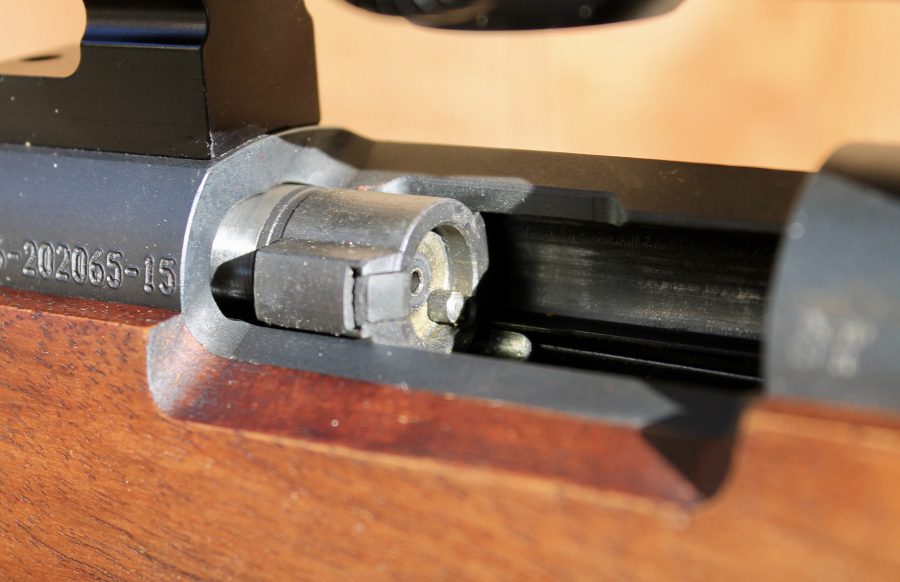
Where the Remington 700 extractor is sometimes credited with being a little weak, Bergara has chosen to upgrade to a slightly more substantial claw extractor. I found it to be functional in kicking spent cases out of the action reliably. The only time I was able to trip up the ejection process was giving a quick enough flip of the bolt to get some bounce at the end of the stroke. Even then, it was about only about one in every ten cases that did a little flip and stayed in the action.
One other quirk I found was that the firing pin hole was a bit oversized leading to primer cratering in factory and handloaded ammo. This never presented any reliability issues, but it was a curious thing that led to an evening of Googling bushing firing fins, and whether primer cratering is a good indicator of overpressure.
I conferred with Bergara’s folks at the Texas Firearms Festival who indicated they know about the issue and don’t consider it a problem. Further validating this was that I got primer cratering at very low powder charges in my hand loads, well before I started seeing ejector swipe and sticky bolt lift. The factory loaded cases that I re-sized and de-primed didn’t have any loose primer pockets which I’ve found to be quite common in the factory Hornady 6.5 Creedmoor brass.
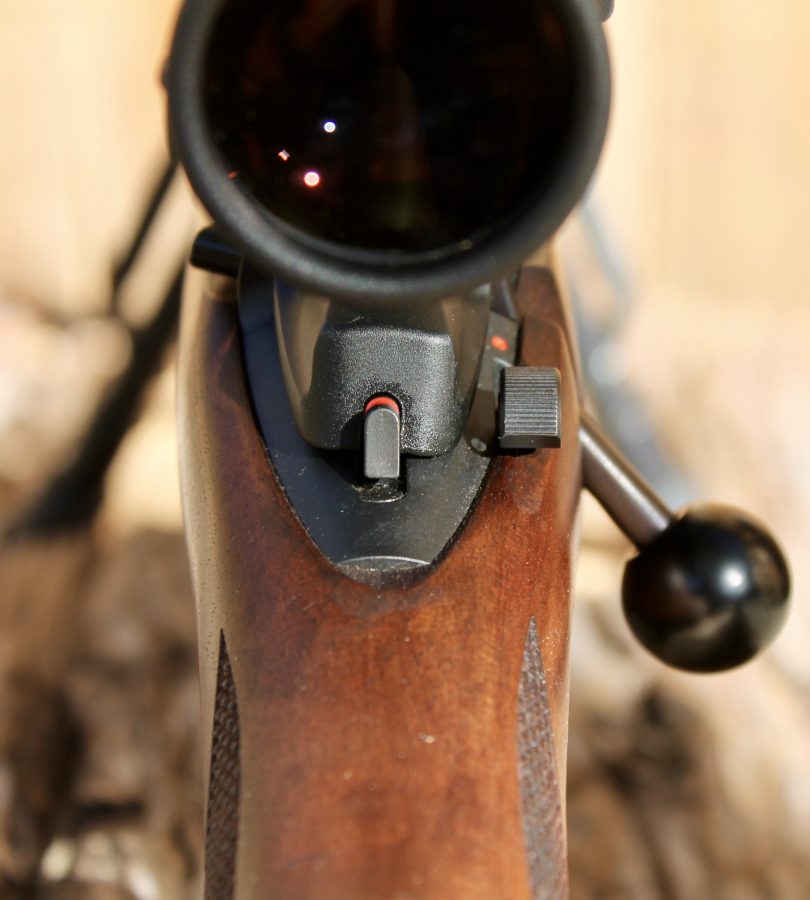
Further back, the controls are well laid out and similar to those familiar with the Remington 700. Where Bergara has changed things: on the bolt shroud and bolt knob. There isn’t really anything wrong with the 700 bolt. It’s just that the Bergara bolt features both an exposed portion to let you know it is cocked as well as a bright red stripe. The tactile and visual cues that your gun is cocked and ready to fire are definite improvements.
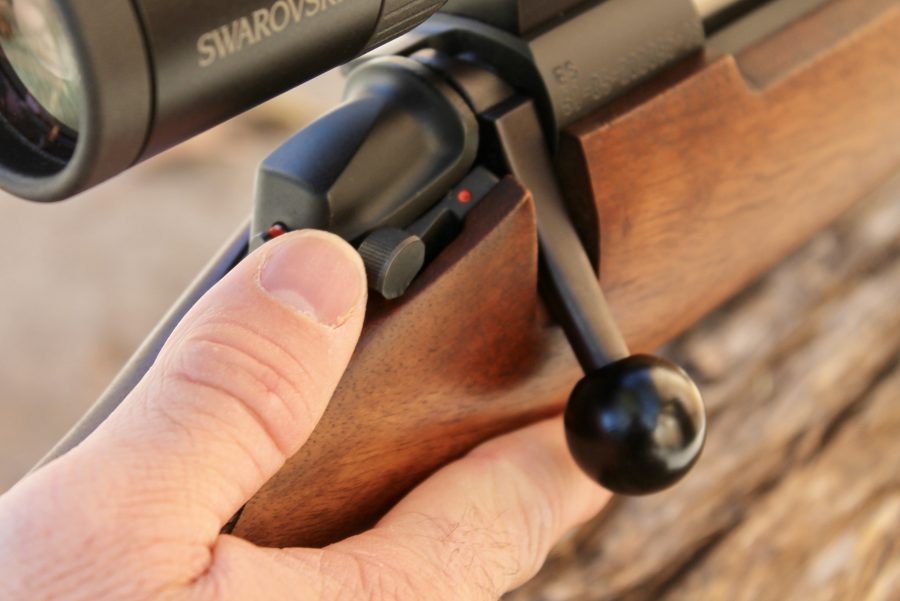
The bolt knob is oversized by most hunting rifle standards and shaped really well. The lollipop on the end of a stick style feels really close to the bolt knob on the Accuracy International AT that I tested earlier this year which is as ringing an endorsement as you can make. In the field and on the range, it feels great in the hand and works really well.

The B-14 trigger is an absolute joy, on par with many of the custom 700 triggers I’ve had the opportunity to sample. The manual indicates that it’s adjustable, but I saw no reason to fiddle with it as it consistently broke at a hair over four pounds – perfect for a hunting rifle.
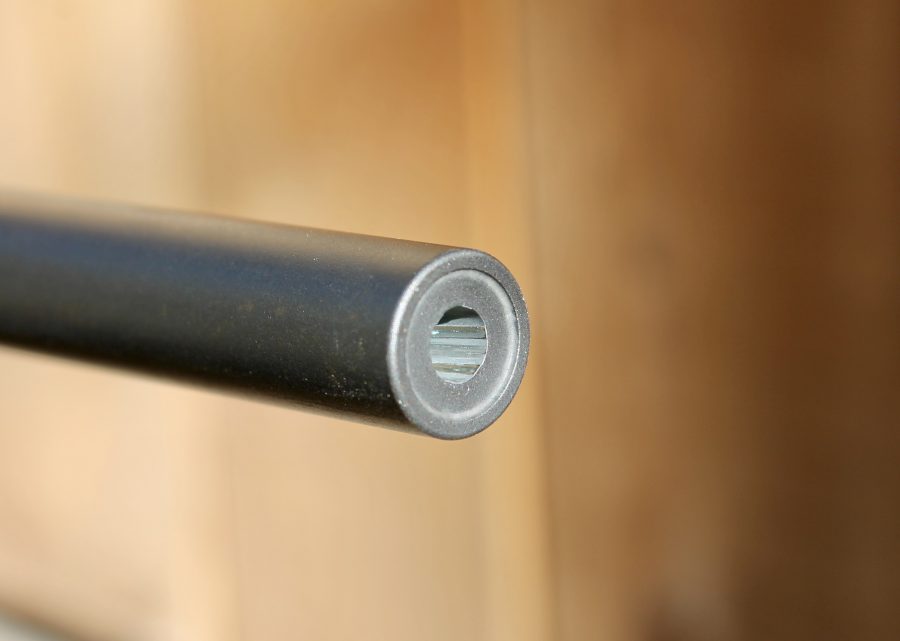
The B-14 features an ever-so-slightly recessed target crown which, if you’re not going to thread the barrel, is a perfect way to finish a hunting barrel. It protects the crown from scratches and dings. About that muzzle threading though; I wouldn’t even mention it otherwise, but Bergara is owned by BPI who also owns Dead Air Silencers. It seems almost criminal that this gun isn’t threaded to accept a silencer or even a muzzle brake.

I shot a variety of factory loads from Hornady and Winchester through the B-14 and found that the 140 gr. (ish) loads like the 143 ELD-X, ELD Match, and Sierra Match King shot in the general neighborhood of 1.1-1.25 MOA for five shots. I never really got it to do much better than that, though every now and then I’d sneak a five shot group just barely under 1 MOA. Reasonably speaking, I would call this a 1.25 MOA rifle…perfectly adequate for hunting purposes.
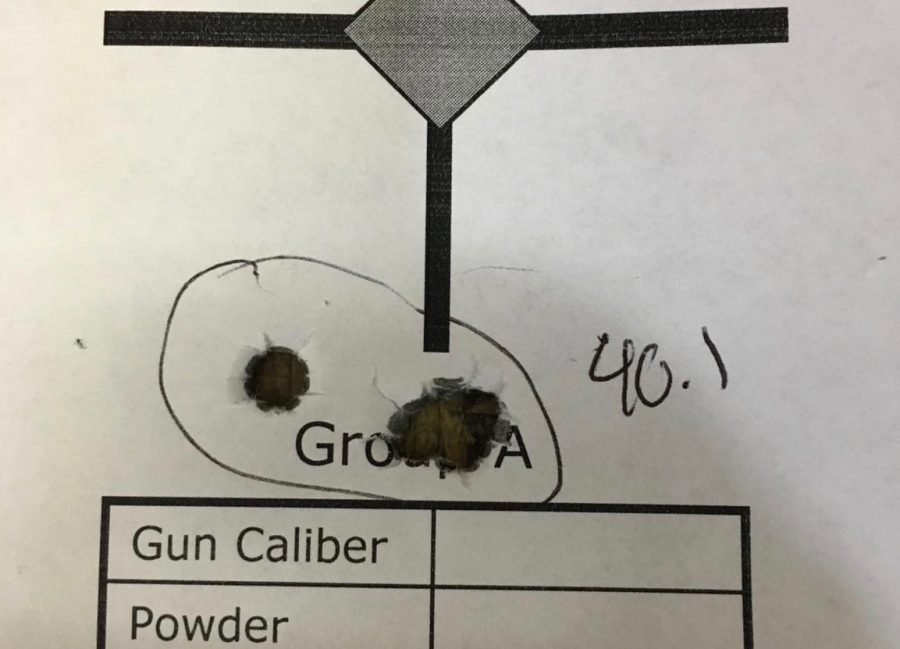
I’ll detail my reloading process with this rifle in a separate article, but I was pleasantly surprised to see that using a Berger 140 VLD, I was able to easily achieve sub minute five shot groups with two different powders. It seemed to take a more immediate liking to 40.1 grains of H4350 as you can see above. Of course, that’s contingent on the shooter doing his or her part, again, something you can see in the photo above. Most of my developed handloads using the Berger 140 VLD came in right around the 3/4 MOA size for five shot groups.
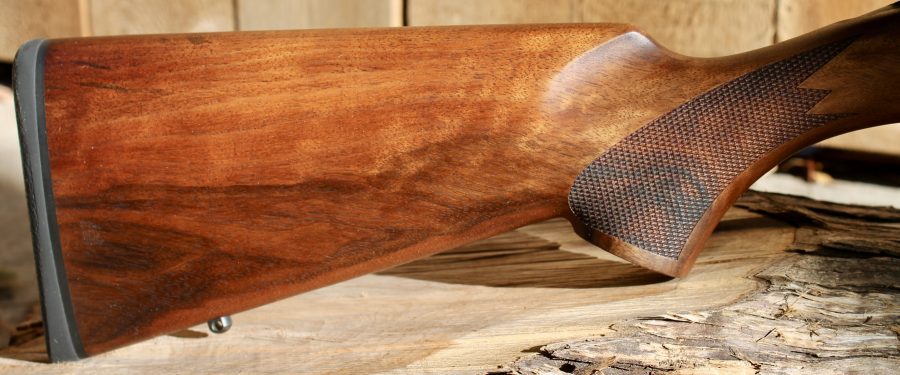
Bergara also makes this rifle in a composite stock and calls it the B-14 Hunter. Doing so knocks $125 off the MSRP…and isn’t something you should do. I say that because the walnut on this rifle looks so damn good. The picture above was the best I could manage, but it doesn’t capture how good the wood looks in direct sunlight.
Here’s what the B14 isn’t: a cheap beater bolt gun that borders on disposable. If that’s your thing, there are about a thousand other rifles that will fit the bill. What this rifle is: A field accurate, quick handling sporter with a great trigger, a smooth action, and a really good looking stock. It works well for actually hunting. And looks great in a cabinet or on the wall as well.
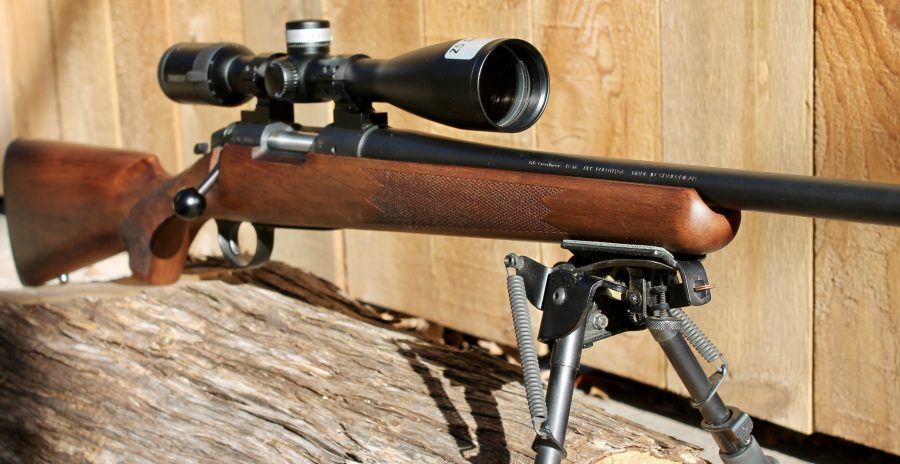
I have rifles that are more accurate than the B-14 in the safe. I have rifles that are more ergonomic. I have rifles that can take a silencer. But if I wanted to don a red flannel hat with some ear flaps and take to the woods on a crisp winter morning in search of an elusive whitetail buck, this would be the rifle I’d choose.
Specifications: Bergara B-14 Woodsman
Weight: Long Action: 7.4 lbs, Short Action: 7.1 lbs
Magazine: Hinged Floor Plate or Detachable Magazine
Magazine Capacity: 4 Standard and 3 Magnum in Floor Plate, 3 Standard and 2 Magnum in Detachable
Trigger: Bergara Performance Curved (adjustable)
Barrel Length: Long Action: 24”, Short Action: 22”
Barrel Taper: #3
Stock: American Style Walnut
Calibers: .300 Win, .30-06, .270, 7MM Rem Mag, .308 WIN 6.5 Creedmoor (Tested Model)
MSRP: $945
Ratings (out of five stars):
Fit, Finish, Build Quality * * * *
The level of quality is top notch, with clean transition points between steel and walnut. The stock was fully free-floated and even on both sides. The action feels smooth, and the magazine floorplate clicks into place with a very crisp snap. The only real squawk: the serial number on the action. Bergara seems to have found someone with a punch and a hammer to enter the necessary data.
Customize This * * * * *
By using the Remington 700 as a dimensional counterpart, Bergara made it easy to swap things like rings/bases and stocks (though why would you?). But it doesn’t need much beyond a bipod (if you’re inclined) and a sling. Both of those can be handled by the onboard swivels. I would have preferred a threaded barrel, but that’s just me.
Accuracy * * * *
Minute and a quarter five shot groups with factory ammo left me a little lukewarm, but I reconcile the fact that this is a sporter barreled rifle that’s got a high level of fit and finish. That’s still minute of deer well out past the range where most people should be shooting. With a bit of hand loading I was able to get groups down to the 3/4 MOA neighborhood with fairly regular consistency, so the potential is definitely there.
Overall * * * *
The B-14 is a superb example of a “hand me down grade” hunting rifle, something that seems to be getting harder to find. If you’re in the market for a Ruger Hawkeye Standard, Winchester Model 70 Sporter, or Remington Model 700 CDL, take the opportunity to check out the little B-14. Bonus points if you’re looking for one in 6.5 Creedmoor as none of those companies are offering their walnut stocked rifles with that chambering. When I want to put on a Filson jacket, and take to the woods for a good spot n’ stalk hunt, this is the perfect rifle to accompany me.




Everyone should own at least one rifle wearing a wood stock. Plastic stocked rifles are cold hard and emotionless, and like you said borderline disposable.
In a world where bolt action rifles have become a race to the bottom on price and quality, it’s refreshing to see something that is beautiful yet functional at the same time.
“In a world where bolt action rifles have become a race to the bottom on price and quality, it’s refreshing to see something that is beautiful yet functional at the same time.”
That sir is the most apt and succinct statement on the current state of the industry that has ever been packed into a single sentence. Thank you.
The main point being, of course, that while the “plastic fantastic” rifles can be and often are used for hunting, it is NOT their primary purpose for existing. Bolt action rifles with crappy or fantastically beautiful wood stocks, on the other hand, are primarily suited to hunting (even in the hands of a sniper), but wholly inadequate when facing a prey that tends to shoot back with ANY semi-automatic rifle. Else the Russians would still be manufacturing and using Mosin-Nagants and the Marine Corps would be demanding a new shipment of Springfield ’03s in 30.06.
“Perusing the shelves of my hometown gun shop, the walnut stocked guns are few and far between while the shelves are dominated by these plastic fantastics.”
I can’t even begin to express how angry I get when I go into either of my LGSs and see a rack full of Ruger’s POS lowest common denominator “American” rifles but not a single Hawkeye.
Of all the cheap plastic rifles, the Ruger American is a cut above. They aren’t cheap, they are inexpensive. I bought one in 5.56 as a cover for all the .223/5.56 ammo in the house when I expected Hillary to win. In fact I named my Ruger America Ranch Rifle Hillary in honor of the failed Democratic nominee.
“…I named my Ruger America Ranch Rifle Hillary in honor of the failed Democratic nominee.”
What did that poor gun ever do to you for you to do *that* to it?
(Gun abuse. Their oughtta be law…) 🙂
“POS”? Not a fancy, engraved stock. But a rifle that shoots very well at all ranges I’ve used it at. I bought a “meat” rifle to hunt with. Not a display item.
I can afford a lot more rifle. But for my purpose, why?
Yes, POS. Any rifle that you can change the point of impact on by putting different levels of pressure on the fore-end is by definition a POS.
Buy a Boyd’s laminate, drop the barreled action in, and problem solved. The rifle is still way less pricey than an M77 but will take game, no problem.
Yes, you can. But you shouldn’t have to.
“The rifle is still way less pricey than an M77…”
Only if you consider $70 less to be “way less pricey”. I don’t. Spend the extra $70 on the vastly superior Hawkeye and get a good rifle out of the box.
Be as mad as you want, they will sell what sells. And it sells for a good reason – it shoots “good enough” to put meat on the table, and there are plenty of people out there who don’t need anything more.
Hands down, walnut stocks are beautiful and composite stocks are cold, lifeless, and ugly.
Having said that, I love composite stocks over walnut stocks because:
(1) They are considerably less expensive.
(2) Water will never damage them.
(3) Moisture will never warp them and affect point of impact.
If your view of a rifle is more akin to a beautiful work of art, walnut all the way! If you view of a rifle is more akin to a tool, composite all the way!
Full disclosure: I have a rifle with a beautiful walnut stock … I would not sell it unless I was facing imminent starvation. Because it is so beautiful, however, I am reluctant to ever take it out and shoot it.
God created linseed oil for one reason — to waterproof walnut rifle stocks.
Or go with laminate stocks, they are beautiful, hell for stout, and impervious to just about anything.
You can use linseed oil (actually, boiled linseed oil), but the products I recommend are the highly purified and refined linseed oils:
– “Lin-Speed” oil, by GB
– “Tru-Oil” by Birchwood Casey
– Tung oil
– If you want a “two coats & you’re done” finish, Pro-Custom oil, which is a combo of varnish and oil
Regular, bulk linseed oil takes way too long to dry for most stock work. The military used to use a more refined linseed oil in huge tanks, and they’d just immerse their stocks completely in the tank, then haul the stock out and let it drip-dry in a warming box to cause the stock to “sweat” off the excess and dry the surface to no longer be tacky. Most people won’t be sweating & drying their linseed oil, and as a result, the bulk BLO you get at Home Depot or other home improvement places will dry to a tacky finish.
Thanks for that DG, will any of those products work on a stock that is already/partially finished? I have found That a lot of OEMs selectively forget to seal the barrel channel when they inlet the stock or occasionally I have to re-seal one after releaving the barrel channel myself to remove pressure points/free float.
If you want to seal the barrel channel as quickly as possible with the least hassle, I’d use the Pro Custom Oil.
NB, don’t allow this stuff to slop over onto the top or sides of the stock, as you will see a varnished spot where it fell.
PCO is great for repairing scratches on high-gloss finished guns as well. I use it all the time on Brownings, Weatherbys, etc – the guns with the thick, dipped, high-gloss finishes. People despair when they come into my shop with a big ol’ scratch running down the stock – and I smile, put them at ease and tell them “there, there, it will be all right…” because I have PCO with which to repair these problems. Works like a champ.
The linspeed/tung oils need many coats or immersion to really seal wood. When I’m doing a custom stock, I’ll cut linspeed 50/50 with mineral spirits, and then slather it onto the stock for a half hour, until it will literally not take any more. Then I let it dry for a day, then repeat.
PCO? Two coats and you should be done. Shouldn’t take you more than four hours. If you don’t like the sheen, hit it with some brass wool.
Composite stocks are great, but only so long as you can used the word Rigid in their description. Any composite stock that isn’t rigid is garbage due to the simple fact that you can change to point of impact so easily by holding it differently. That has been my experience with the Ruger “American”, the Savage Axis, and the Remington SPS.
Yep. Most of the plastic stocks on the sub-$600 rifles are, in a word, trash. They’re whippy, they’re soft when heated, you can reef down on a sling when shooting and cause the forearm to touch the barrel, etc. They’d become another source of annoyance and contempt for me, because customers cheap out on buying a rifle, then discover “hey, my stock has warped (or insert other reason here)” and they come to me, wanting me to fix the wretched mess for less money than they paid for the whole rifle.
It’s like the ChiCom Rem870 knock-offs – if they’d spent more on their original purchase, they’d have something to work with, but as it is, they didn’t and don’t. By the time I’ve added enough of my skill and materials to remedy their stock’s problems, they might as well have plopped down $1K for a proper rifle to begin with.
A good, solid, rigid/stiff synthetic stock starts at $350 and goes up to $1K+. ie, as much as the entire plastic-fantastic rifles cost.
I usually buy the gun with the cheapest pos plastic stock I can get. Then I replace the stock with an HS Precision and I’m good to go. The last one was a stainless Weatherby Vanguard. That being said, I just ordered this Bergara specifically because I miss the walnut stocked rifles of my younger years. This one at least is pillar bedded from the factory so you can get your torque specs repeatable.
I don’t see this as an either/or but a both/and. The Bergara is the same footprint as a Rem 700 which I have. I put an HS on this the week after I bought it.So I’m going to be able to use it with the Bergara. It’s going to be interesting to go to the range and swap them back and forth to see if the pillar bedding is as effective as the full length aluminum bedding block.
There’s a big difference between a true composite stock made out of aramid fiber/fiberglass/carbon fiber + resin with pillars or some sort of bedding block (B&C, manners, HS, McMillan, Grayboe, etc), and the cheap injection molded plastic Tupperware stocks that can be bent by hand or when you load up a bipod, and get soft when left in the sun that all the mass retail market bottom dwellers at big box stores are wearing under the name “composite”.
A properly bedded and sealed wooden stock will be better than that by far, and be even with a true composite stock in 90% of real world conditions only falling short in the most extreme l/harsh conditions out there.
Yep. Quite a bit of the factor in the quality of a wood stock is the choice of wood. One has to choose the blank for the proper grain flow, density, etc.
Then, if we want to make the forearm stiffer, we machine out some slots and drop in some carbon fiber strips, the same ones used by luthiers to stiffen the necks of guitars and stringed instruments. Presto! Stiff-as-synthetic forearm in a wood package.
As for the difference between the junque stocks that the big manufactures put on their plastic-fantastic rifles and a real synthetic stock (McMillan, et al)? Night and day. The price for a proper synthetic stock is almost as much as this entire rifle.
BTW, the grain flow on this particular stock isn’t optimal. You want to see the grain flow “uphill” as you move from the wrist to the forearm tip. This stock’s wood appears to not consistently flow uphill in the forearm.
Real wood and real steel. Can it be that a Spanish firearms company is making America great again?
For the price of a plastic fantastic you can find a decent but slightly beat up $800-900 rifle with a reasonably good wood stock you don’t have to worry about getting scratched and dinged, because someone already did that for you.
There are tons (literally) of high quality, used firearms out there in the used gun market. eg The quality of even the most modest field grade Winchester Model 12 is miles ahead of the quality of any pump action shotgun under $1K made today. The Belgian made Auto 5’s make what Browning is shipping today under the “Auto 5” name look… sigh.
Heck, even the quality of an original 1950’s Rem 870 is miles ahead of what Remington makes today.
When I look around the firearms market today, what I see is a market that’s increasingly churning out products that are so poorly finished that I often want to hurl them across my shop. When I open up a brand new shotgun and they can’t even be bothered to de-burr parts that have been stamped out of plate steel, it’s an infuriating sign that the industry is rapidly achieving the same level of contempt for their customers that US auto companies had for their customers in the 1970’s, when doors didn’t stay closed because the door wasn’t aligned on the hinges properly at the factory.
I can’t remember the last time I bought a NIB gun. I’ve bought a bunch of guns in the last year, but none of them have been of new manufacture.
Truth right here, one of my favorite and most cherished rifles I own is a Pre trigger gate Remington 700 VLS that came off the used rack at Cabelas. They do get a lot of garbage but every so often there is a real gem hiding there. One of my weekend rituals involves visiting the gun library at my local Cabelas, and surfing local forums to see what people are trying to get rid of.
I never understood how people can part with these beautiful rifles. I occasionally flirt with the idea of selling my Remington but promptly talk myself out of it. A month or two ago I passed on an absolutely stunning New Haven CT made Model 70 Winchester Super Grade that someone was selling on a local forum for a song trying to fund a SCAR17. I wanted to tell the guy he was being extremely foolish, that’s a rifle his kids and grandkids would have fought over.
I found a mint condition early 1950’s lever .32 Winchester Special at Cabelas by chance. Snapped it up. Beautiful wood, w/lyman sights. I’d been looking for one for almost 20yrs, but all I could find was over priced beat up, used up, former deer killing work horses. I know what you mean by passing down a beautiful rifle to kids and grandkids. The syn guns won’t mean shit to them, but my Great Grandfather’s double barrel Parker Bros shotgun handed down to me will.
Looks like a sweet field gun to me.
Personally I like both synthetic and wood stocks and own both.
My recent acquisition of a Remington 700 SBS Compact in .243 Win came with a synthetic stock, so it’s not just Mossy and Savage doing that. Personally I find that stock to be too short and… well generally not fantastic. I’ve order a McMillan to replace it, which will also be synthetic but with the custom color should have much more personality than a plain black plastic stock.
I think it depends on what you’re doing with the rifle honestly. I’m customizing that 700 for a very specific reason: weight. I’m doing that for a very specific reason. Nothing against wood but when I’m going to try to lug the thing plus ammo and everything else I need 35-50 miles in two days the few pounds the synthetic stock cuts off the weight means quite a bit in terms of carrying it and really doesn’t affect the recoil that much if the replacement is well made.
Things that used to be made of wood:
Boats
Wagons
Railroad cars
Wheels
Furniture
Buildings
Tool handles
Gun stocks
I get the nostalgia. I get the beauty. I even get that wood has some specific attributes that have yet to be duplicated by synthetic materials. For example, wooden hammer handles have superior vibration-dampening ability compared to fiberglass.
The truth is, we have moved on from wooden stocks for the same reasons we moved on from flintlocks and black powder. The former is still functional, but the latter has undeniable practical superiority.
The real truth is, we have moved on from wooden stocks because wood is expensive and plastic is cheap as sh!t.
And plastic stocks can be made by some minimum wage dolt who pushes the green button on the machine, waits for the beep, then removes the result.
You say that like it’s a bad thing.
Guns used to be expensive. Modern materials and manufacturing processes have made the Second Amendment available to the masses.
Looking at the bolt nose, a new barrel on this rifle will not be like a Rem700 barrel. It will be more like that of a post-64 Winchester 70. Matter of fact, looking at that photo of the bolt, I don’t know why they didn’t use the type of extractor used on the post-64 Win70 rather than what they have there, which looks to compromise the right bolt lug much more than the post-64 Win70 extractor did.
The action does not appear to use a washer for the recoil lug; I’m guessing the front ring is a tad longer than a Rem700 action and has the recoil lug integral to the receiver. This is a superior design point, IMO. Remington’s use of a fat washer for a recoil lug has always annoyed me. It’s just one more thing a guy has to deal with when truing up an action.
Per their marketing literature, the receiver is a coned breech (so yeah basically the same as the push feed winchesters) with an integral recoil lug. I also remember reading somewhere that the receiver is made in house and is already blueprinted, so a re-barrel should be infinitely easier than working on a factory Remington take off. Right?
Well, with a coned breech and an integral recoil lug, I don’t know how far we can torture the marketing phrase “Remington 700 compatible” any more.
Re-barreling: The stock Rem700 is pretty easy to re-barrel. Pull off the old barrel, measure the recoil lug/washer, measure to the bolt face, mount the barrel in the lathe, turn the tenon to diameter, thread it, chamber it, then measure the bolt nose for diameter and protrusion, cut the recess for the bolt nose, and now polish the edges of the chamber and bolt nose recess. Screw it all together, strip the bolt, check for headspace, etc.
On the coned breech rifles (like a Springfield ’03 or Win70), you do all of the above except for cutting the bolt nose recess, but then you have the cone-cutting operation in there before you come out of the lathe, You need to cut the cone deeply enough so that you don’t have excess clearance, but you don’t want the bolt nose rubbing on the cone – so you sorta have to “sneak up” on the dimension. I polish breeches, esp. on coned breeches, with some Craytex to get them very smooth.
On this rifle, you don’t need to cut the extractor notch; on a ’03 or 70, you need to then mount the barrel into the receiver, put in a flat stock transfer punch (of sorts) to mark where you need to cut the extractor notch, mark that, then take the barrel out of the lathe, mount it vertically on an angle plate hanging off the edge of the mill table, and cut the extractor notch. Alternatively, you could get one of PTG’s fancy-pants notch cutters and do the job whilst holding the barrel horizontally in your mill vise with some v-blocks and aluminum/brass sacrificial material. Other guys have ground Woodruff key cutters to do the job.
Nice rifle. ~ Good Price.
Bob Dylan is a POS communist.
The rifle in this review is beautiful, and one I would really be proud to own. I’m just happy we have choices. American walnut stocks and synthetic stocks are both good in their own way. It’s a good time to be a shooter and a gun owner.
laminated wood seems a good compromise: strong/ (glue) heavy.
my model 10 came with aluminum bedded plastic which seems a bit flexi flyer, more at rear than the front. i think the fore end could definitely flex under sling tension, but the cheek area can be pinched to flex with nothing more than fingers. there is a sad ass looking piece of (oil? cosmoline?) soaked foamish fabric stuff residing behind the buttplate that basically does nothing. very cheesy, i’ve thought about filling the whole hollow with wax or foam but don’t want to add all that weight.
that bolt handle on the bergara exists in my world somewhere on a ball valve or momentary switch with a blue face. it’ll come to me later.
The knob on the bolt handle is removable and designed for multi-use. After it’s drilled for finger holes you can go bowling with it.
Yea, I noticed that too, but decided I wasn’t going to rip on them about it. After all, it can be replaced by a steel or aluminum knob.
for the miniature clowns…
Great review, Tyler.
and many thanks to the knowledgeable commenters- DysG, especially.
I was thinking Ruger Predator in 6.5, but they are apparently out of stock in dealer searches.
So now I will save some pennies for this Begara in wood. Closer to my old win70-270, which is going to the boy,
but lighter on old shoulders, for me, and another hand-me-down, to my daughter when she is ready to hunt.
My bergara is bad would not recommend them at all.
Lovely rifle. Saving to buy one. I now use a Remington 700 SPS in .243 for deer hunting. The stock is really not flimsy at all. You can used this gun as a fencepost for 8 months out of the year, dig it up, clean it, and it’s good to go for anything under 200 yards. I have a Winchester Model 70 featherweight with a (once) beautiful walnut stock, but after 25 years of hunting and climbing trees, it now looks like the aforementioned fencepost.
Anyone know how to remove scratches and small gouges from walnut without a strip and refinish job?
Try Pro Custom Oil.
Gear up as your favorite Delsin Rowe Vest. Slim Fit Leather Jackets brings this iconic jacket from animation to reality, especially for all the fans of this video game. Delsin Rowe is the main protagonist and playable character, a young Native-American man who later realizes he’s a Conduit with special powers.